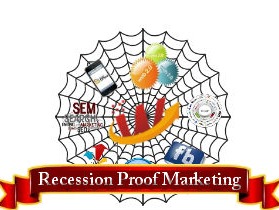
AI Survival Strategies: Charting the Course for Publishers
The publishing landscape is undergoing significant change, driven largely by the rise of artificial intelligence (AI). As AI technologies gain ground, there is widespread concern within the publishing industry, reminiscent of the anxiety felt during the early internet era. While some fear that AI could be the end of traditional publishing as we know it, others see it as an opportunity for renewal and growth.
Embracing Search: A New Reality
Despite alarming predictions, search engines like Google continue to serve as a major traffic source for publishers. However, it’s essential to recognize that the era of consistent growth in search clicks has likely peaked. Many experts agree that publishers must focus on maximizing their existing SEO strategies rather than expecting new growth from search traffic alone. Publishers need to understand that Google traffic is becoming a zero-sum game; growth for one site often comes at the expense of another.
The Reality of AI on Traffic
It's crucial to acknowledge that AI didn’t flatten the search traffic curve; it amplified trends that were already present. Elements like zero-click searches have been around for years, and AI's introduction only accelerated their rise. Publishers now face the challenge of diversifying their audience strategies. Relying solely on search for traffic can pose a fatal risk, as AI and change in consumer behavior continue to evolve.
Going Beyond Google: New User Engagement Strategies
Many publishers have primarily relied on Google as a traffic gateway. However, with Google now serving as a mere discovery layer, it is imperative for publishers to implement new tactics for audience engagement. Building direct relationships with readers through emails, newsletters, and social media is key. This pushes publishers to go beyond traditional SEO and engage audiences in ways that establish loyalty and promote repeat visits.
The Role of Multimedia Content in the AI Era
As the landscape of online news consumption evolves, publishers should embrace a variety of media formats. Audiences are no longer just consuming articles; they expect content in formats they prefer, including video and podcasts. YouTube Shorts and Instagram Stories can be effective ways for publishers to capture attention and keep their branding relevant. By transforming existing articles into multimedia presentations, publishers can significantly enhance their reach and target deeper connections with their audience.
Creating Value: Becoming Unforgettable
In a saturated market, it is vital for publishers to establish a unique identity. If a news outlet is interchangeable with others, its survival becomes questionable. Engaging in conversations with readers, gathering feedback, and understanding audience preferences are imperative. This reflection will empower publishers to innovate, align content with audience desires, and ensure their offerings are perceived as indispensable.
Preparing for Change: Adopting New Strategies
The publishing industry stands at a crossroads. With estimates predicting that up to 40% of mid-tier publishers may cease operations within the next few years if they do not adapt, the urgency for immediate action cannot be overstated. Publishers should seek to diversify their revenue streams, optimize for new traffic sources, and shift their strategies to prioritize audience ownership and brand loyalty, rather than merely chasing clicks.
Concluding Insights: Preparing for the Future
The future for publishers in an AI-driven world may seem daunting, but it is also filled with opportunities for those willing to adapt. Engagement, innovation, and a deep understanding of their audience will be essential for any publisher aiming to thrive in this new era. As we push forward, the key will lie in how effectively publishers can pivot, diversify strategies, and maintain a firm grasp on their audience's needs amidst ongoing changes.
 Add Row
Add Row  Add
Add 




Write A Comment